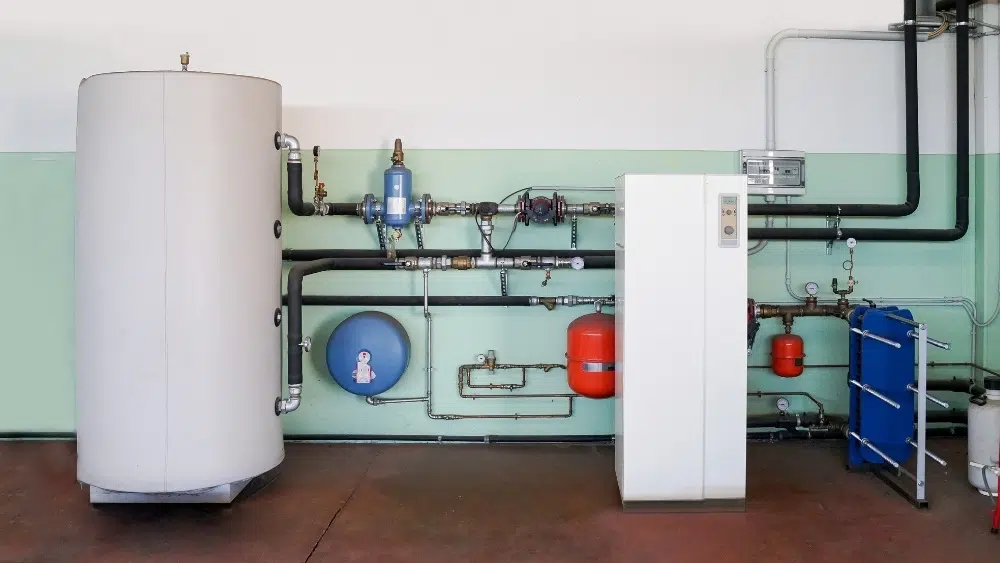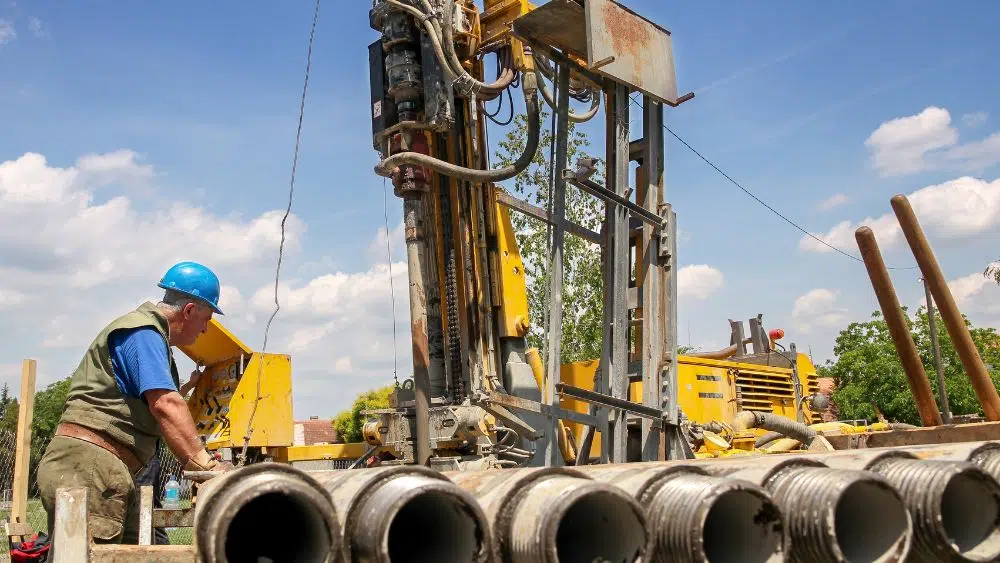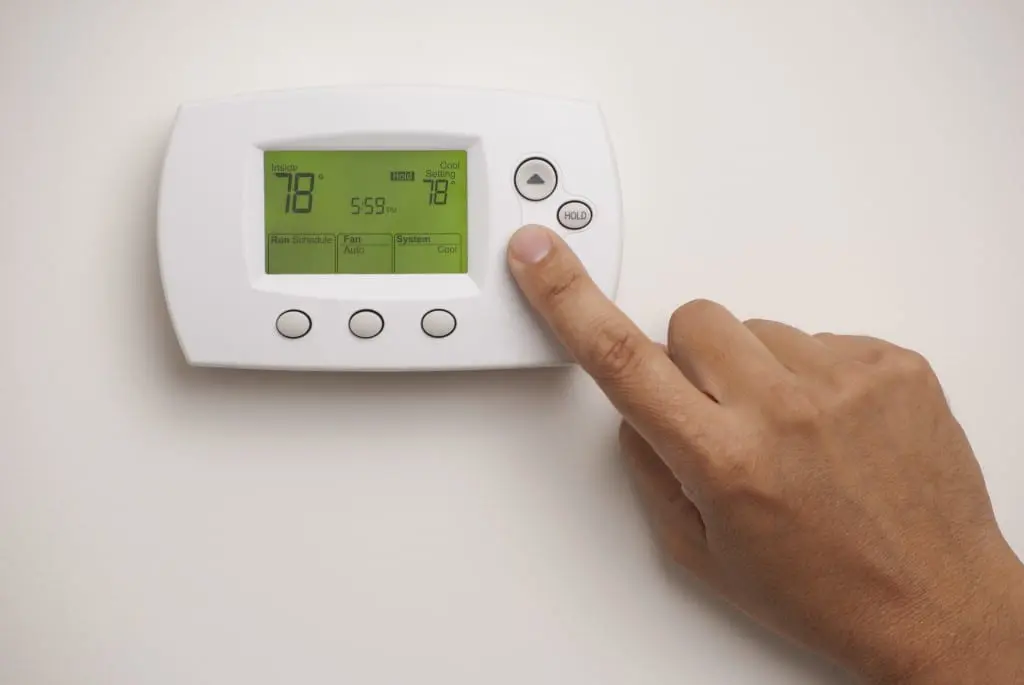
Central heating systems, boilers, portable heaters – there are handfuls of ways homeowners can heat their homes, keeping each room warm and cozy. But have you thought about geothermal heat pumps?
With more and more households shifting to green-friendly swaps – from adding solar panels to switching to LED lights – geothermal heat pumps are growing in popularity as a renewable energy source. They can heat, cool, and even provide hot water to your home.
But they’re a sizable investment. If you’re thinking about installing a geothermal heat pump to cut your energy bills, here’s our guide on what to expect.

What Are Geothermal Heat Pumps?
Geothermal heat pumps – also known as GeoExchange – use the earth’s natural heat to help with heating and cooling your home. Some are equipped to provide hot water.
While some parts of the U.S. deal with sub-zero winters and scorching hot summers, the heat pumps rely on the constant temperature just a few feet below the ground instead of outside air temperature.
This is a big advantage: The temperatures below ground stay cooler than natural air temperature during a hot, sticky summer, and warmer during the blustery winter months. Essentially, they’re using natural heating and cooling from the earth’s interior, instead of using more energy to heat and cool outside air temperature like conventional HVAC systems.
What’s more: in the summer months, geothermal heat pumps can store heat deep in the ground for future use, increasing their efficiency in the winter months. The ground’s constant temperature acts as a heat source in the winter and a “heat sink” in the summer, according to the U.S. Office of Energy Efficiency and Renewable Energy.
How Do Geothermal Heat Pumps Work?

Geothermal heat pumps require burying a collection of pipes several feet below ground level. You can bury the pipe system in your backyard, beneath your home, or even under your driveway.
The pipes are filled with an environmentally friendly antifreeze and water solution that acts as the heat exchanger. In the winter months, the liquid in the pipes extracts trapped ground heat and transfers it into a geothermal heat pump. Electricity powers the heat pump, and just like a furnace, the pump removes the heat from the liquid and funnels it into your home via air ducts.
The system works in reverse in the summer: Surface air is extracted and transferred into the ground for natural cooling, according to the U.S. Department of Energy (PDF).
Homeowners can opt for different layouts for their pipes, too. You can choose a closed-loop system, with pipes laid out horizontally or vertically, depending on the layout of your lot. Typically, a vertical closed-loop system is used because it doesn’t require as much space. The other option is an open-loop system, which uses groundwater as a heat source instead of the antifreeze and water solution.
How Energy-Efficient Are Geothermal Heat Pumps?
If eco-friendliness is your priority, geothermal heat pumps are your best bet.
The U.S. Environmental Protection Agency (EPA) calls geothermal heat pumps the most energy-efficient, environmentally clean, and cost-effective way to heat and cool buildings for good reason. They slash energy consumption by up to 72% compared to standard air-conditioning equipment and up to 44% compared to air-source heat pumps, according to the U.S. Department of Energy. They also use 25-50% less electricity than conventional heating or cooling systems.
How Much do Geothermal Heat Pumps Cost?

Homeowners taking the GHP route will need to make a significant initial investment in this eco-friendly way to heat and cool their homes.
The government reports that an average geothermal heat pump system costs about $2,600 per ton of capacity, with most homes requiring at least a 3-ton unit ($7,500). But homeowners need to factor in costs incurred for surveying the land, drilling, and installation, too. These price points will vary – if you’re moving into a home on a brand-new lot, you may face lower costs compared to homeowners retrofitting their property. Most estimates suggest that homeowners could be paying between $18,000 and $45,000 for a full GHP installation.
The underground piping for GHP systems often has warranties ranging from 25 to 50 years, while the pumps often run for at least 20 years, if not more, so these systems are built to last.
Bear in mind, that the cost of buying and installing a conventional central air system and furnace could cost anywhere from $8,000 to $20,000. For comparison’s sake, gas, oil, and propane furnaces typically need to be replaced every 15 to 20 years and may require maintenance along the way.
Are There Tax Incentives for Installing Geothermal Heat Pumps?
If you’ve set your sights on installing a geothermal heat pump for your new home, or you’re retrofitting your property to accommodate it, we have some great news for you: Financial assistance from the federal government is yours for the taking.
The 2022 Geothermal Tax Credit allows homeowners to claim 26 percent of the system’s costs – installation included – as a credit toward their federal income taxes. That means a $20,000 system could be reduced to $14,800. Note: The installation must be completed by the end of 2022.
In fact, the tax credit applies to all costs incurred for buying and installing solar water heating, small wind energy, geothermal heat pumps, and other qualifying energy-efficient changes you’re making to the home. You must file a Residential Energy Credit (PDF) claim form with the Internal Revenue Service.
The catch? Your geothermal heat pump equipment must be part of the Energy Star program at the time of expenditure. The current tax credit program will be available through 2023. It’s worth noting that each time the program is updated, the tax credit decreases.
Most states and some cities have regional energy-efficient loans and tax credits. Check on your municipality’s website for more information.
Can Geothermal Heat Pumps Save me Money on Heating and Cooling Bills?

Yes! If you’re in it for the long haul, you’ll recoup your costs in energy savings in five to 10 years, according to the DOE. Some estimates suggest that GHP will save homeowners 30 to 60 percent on heating and 25 to 50 percent on cooling. The DOE says that’s because they move between three and five times the energy they consume between a building’s interior space and the ground. They’re especially great for “zone” space conditioning – or targeting different parts of the home for heating and cooling.
They have some aesthetic perks, too: With most of the installation happening below ground, the hardware requires much less space around the home than conventional HVAC systems, freeing up space inside and outside of the property. If you’re worried about noise, they’re quiet, too. Gone are the days of your noisy AC condenser unit taking up space in your backyard.
What are the Drawbacks of Geothermal Heat Pumps?
With all that said, Geothermal heat pumps aren’t necessarily the best choice for every household. You’ll need to keep these factors in mind before proceeding:
Budget
Between installation and buying the pump and piping, homeowners are committing to a big investment to swap over to this energy-efficient way of heating and cooling their properties. For some homeowners, the initial buy-in may be too much, even with a tax credit offsetting some of the expenses, and a promise to recoup costs via lower energy bills.
Site parameters
If you’re considering retrofitting your property to install a geothermal heat pump, you may have trouble finding the space to dig up room for the extensive piping that’s required. As a benchmark, you’ll need about 400 to 600 feet of piping loops for each ton of capacity. ]
Remember: The average home requires about a 3-ton unit, so you’d need space for roughly 1,200 to 1,800 feet of coiled piping. Homeowners moving to a new plot of land may have more wiggle room, preparing their space for the required piping. Other factors like soil and mineral content need to be considered, too.
Length of stay
Some people buy a house where they can grow old and retire in, while others buy with plans to trade in their investment to climb up the property ladder. If you’re not sure if you’re staying in your home for the foreseeable future, it may not be wise to sink your savings into setting up geothermal heat pump infrastructure.
Homeowner Resources:
We would recommend picking up a copy of the book Geothermal HVAC: Green Heating and Cooling, as it is one of the best guides to help you learn more about geothermal heating and cooling.

Carmen Chai is an award-winning Canadian journalist who has lived and reported from major cities such as Vancouver, Toronto, London and Paris. For NewHomeSource, Carmen covers a variety of topics, including insurance, mortgages, and more.
 Top 10 Best Places to Live in New York
Top 10 Best Places to Live in New York